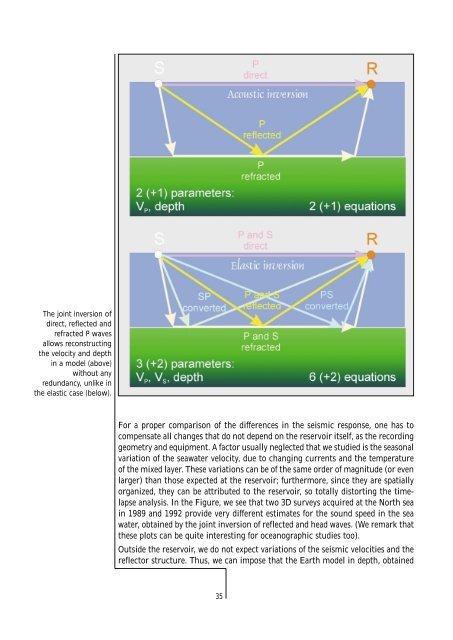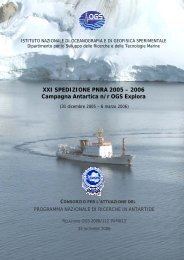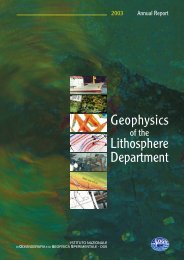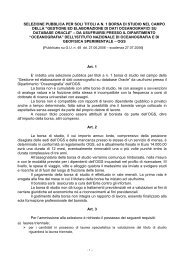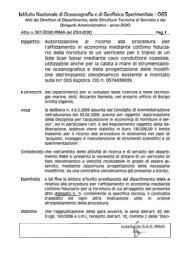Geophysical data acquisition - OGS
Geophysical data acquisition - OGS
Geophysical data acquisition - OGS
You also want an ePaper? Increase the reach of your titles
YUMPU automatically turns print PDFs into web optimized ePapers that Google loves.
The joint inversion of<br />
direct, reflected and<br />
refracted P waves<br />
allows reconstructing<br />
the velocity and depth<br />
in a model (above)<br />
without any<br />
redundancy, unlike in<br />
the elastic case (below).<br />
For a proper comparison of the differences in the seismic response, one has to<br />
compensate all changes that do not depend on the reservoir itself, as the recording<br />
geometry and equipment. A factor usually neglected that we studied is the seasonal<br />
variation of the seawater velocity, due to changing currents and the temperature<br />
of the mixed layer. These variations can be of the same order of magnitude (or even<br />
larger) than those expected at the reservoir; furthermore, since they are spatially<br />
organized, they can be attributed to the reservoir, so totally distorting the timelapse<br />
analysis. In the Figure, we see that two 3D surveys acquired at the North sea<br />
in 1989 and 1992 provide very different estimates for the sound speed in the sea<br />
water, obtained by the joint inversion of reflected and head waves. (We remark that<br />
these plots can be quite interesting for oceanographic studies too).<br />
Outside the reservoir, we do not expect variations of the seismic velocities and the<br />
reflector structure. Thus, we can impose that the Earth model in depth, obtained<br />
35


